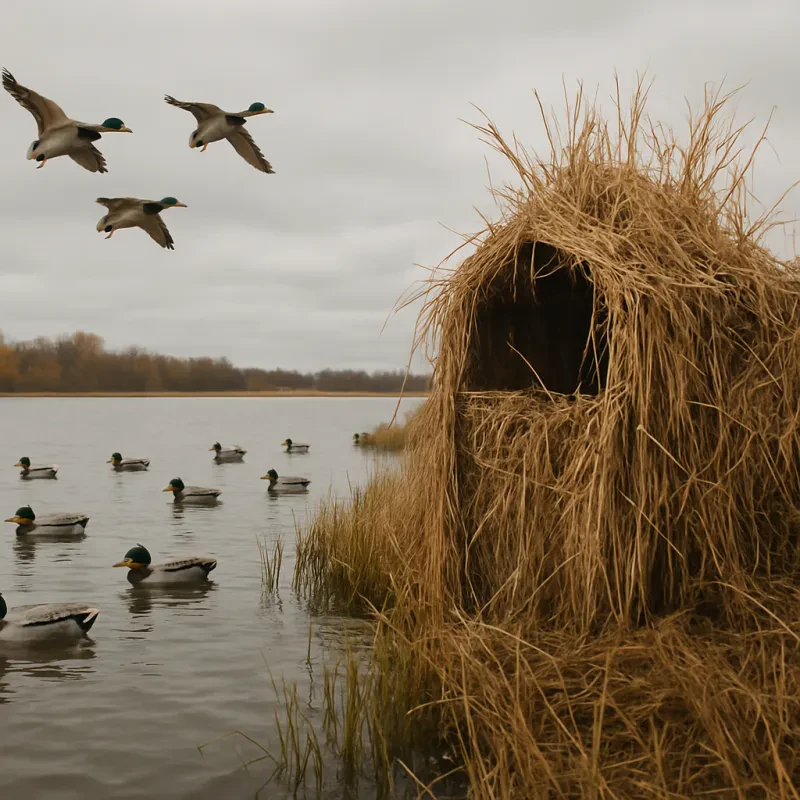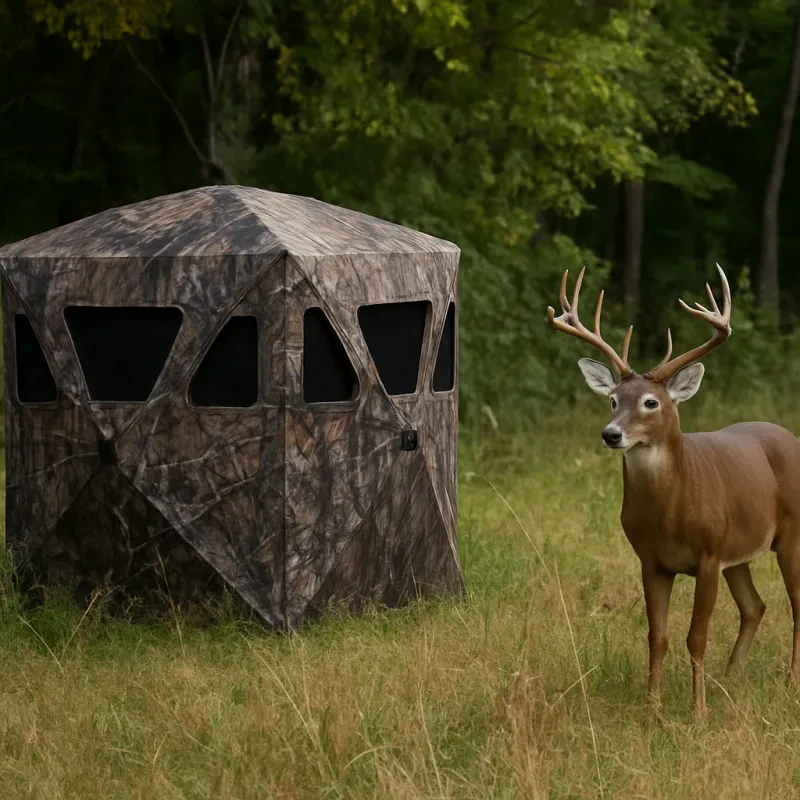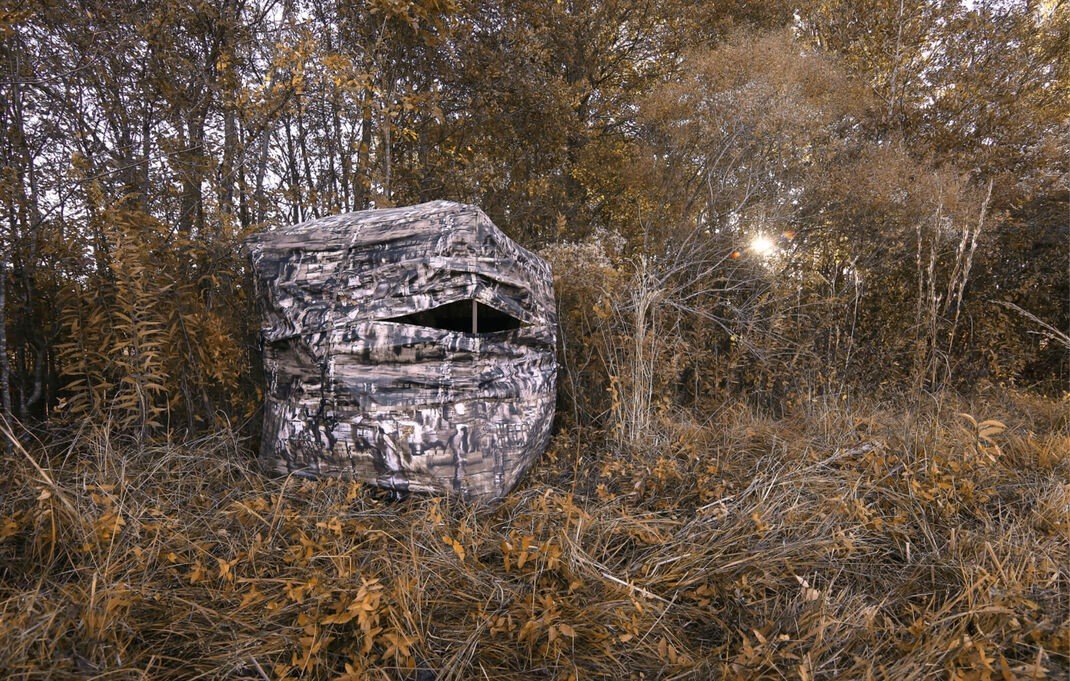When getting into hunting, finding the right hunting blind can make all the difference. For folks diving into this hobby, especially if you're looking for hunting blinds for beginners, it’s important to know what to look for. You’ll want something comfortable, easy to set up, and, of course, effective at keeping you concealed from wildlife.
First off, think about the type of hunting you'll be doing. Are you aiming to hunt from a stationary spot or are you more the type to move around? If you plan on staying in one place, a ground blind could be your best bet. They provide excellent coverage and often come with camo patterns that blend well with the surroundings. On the other hand, if you're up for some mobility, a tree stand might suit you better. Just make sure to consider your comfort and safety.
Next up, check the size and setup. You don’t want a blind that’s too small or cramped, especially if you’re hunting with a buddy or your gear takes up space. Look for options that are easy to pop up and fold away. This way, you can spend less time wrestling with your gear and more time focusing on the hunt.
Lastly, don’t forget about weather resistance. You never know when a rain shower might sneak up on you, so choose a blind that can stand up to the elements. Some models even include insulation for those chilly mornings. In short, keep your needs and the climate in mind as you explore hunting blinds for beginners.
Types of Hunting Blinds Explained
When it comes to Hunting Blinds for Beginners, knowing the different types can really help you choose the right one for your needs. Each type of blind offers its own perks, so it's crucial to understand what suits your hunting style best. Let’s break it down!
1. Ground Blinds
2. Tree Stands
3. Portable Blinds
Understanding these different types of hunting blinds can help you make the best choice as a beginner. Picking the right blind not only boosts your chances of success but also makes your hunting experience more enjoyable. Happy hunting!
Setting Up Your Blind Like a Pro
Setting up your hunting blind doesn’t have to be a hassle. With a few simple tips, you can feel like a pro in no time. First things first, choose the right spot. Look for areas where wildlife frequently travels, like near water sources or feeding areas. This increases your chances of seeing game while you’re tucked away in your blind.
Next, pay attention to the wind direction. You want to position your blind so that the wind carries your scent away from where you expect the animals to come from. A good rule of thumb is to have the wind at your back. This little detail can make a big difference in your success rate.
When it comes to assembly, follow the instructions closely. Most hunting blinds are designed to be easy to set up and take down. If you’re using a pop-up blind, find a clear area to unfold it and make sure it’s secured well. If it’s a more permanent setup, consider staking it down to avoid any surprises from strong winds.
Finally, don’t forget about your camo! Blending your blind into the surrounding environment is key. Use natural cover like branches or foliage to help break up the outline of your blind. This extra effort keeps you hidden and increases your chances of a successful hunt. With these tips, you’re well on your way to mastering hunting blinds for beginners!
Tips for a Successful Hunting Trip
Heading out for a hunting trip can be super exciting, especially if you’re a beginner. Here are some friendly tips to help you make the most of your adventure with hunting blinds for beginners.
1. Choose the Right Location: The spot you pick can make or break your trip. Look for areas with plenty of wildlife activity. Before setting up your hunting blind, scout the area to find signs like tracks, droppings, or feeding areas. This way, you’re more likely to encounter game.
2. Set Up Early: Give yourself plenty of time to set up your hunting blind before the action starts. Arriving early allows you to settle in and get comfortable. Plus, it helps to avoid spooking any animals that might be in the area.
3. Stay Quiet and Still: Once you’re in your blind, keep your noise level down. Animals are more sensitive than you might think, so even small sounds can alert them. Try to minimize movement, too; staying still increases your chances of a successful sighting.
4. Be Patient: Hunting is all about patience. Don’t get discouraged if you don’t see anything right away. Sometimes, it takes a while for wildlife to show up. Bring a book, a snack, or just enjoy the peace of nature while you wait!


